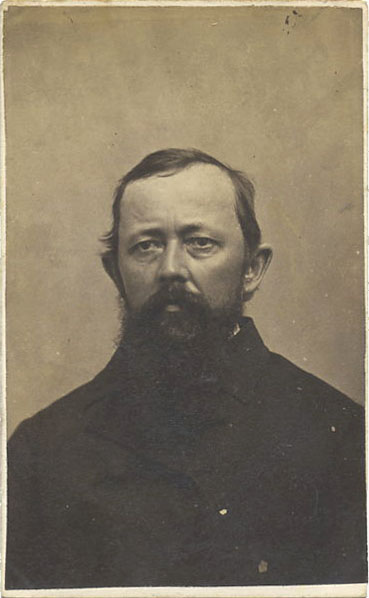Here is a great photo of a Civil War surgeon on horseback...A very interesting back story as well.

On May 14, 1861 Dr. Reed B. Bontecou, a practicing physician, mustered into service with the 2nd New York Infantry, organized at Troy, and known as the Troy Regiment. The regiment left the state for Fortress Monroe, Virginia, May 18 and occupied Newport News on May 29.
In September 1861 Bontecou accepted an appointment of surgeon of U.S. Volunteers and was placed in charge of the Hygeia General Hospital at Fortress Monroe. To quarantine patients, Bontecou established a small pox hospital on the beach a mile north of the main hospital at the fort.
Bontecou was obliged to inspect the small pox hospital frequently. He usually went alone to avoid exposing hospital orderlies to the infectious disease. While returning from such duty on the evening of February 25, 1862, Bontecou ran his horse along the beach. In the dark "his horse tripped over the partly-buried carcass of a mule & fell, throwing him violently over its head and causing a hernia at the umbilicus." The injury was not permanently disabling, but nonetheless "the Doctor was confined to his room & ... Twas several days before he was able to resume his duties."
On Sunday morning, March 9, 1862, Bontecou, still suffering from his injury, was "assisted to the lookout on the roof of the Yygeia Hospital" to watch the historic engagement of the waters of Hampton Roads between the Monitor and Virginia.
Fitzpatrick, Mike "Dr. Reed Bontecou". Military Images. FindArticles.com. 03 Dec, 2009. http://findarticles.com/p/articles/m...1/ai_n9194675/
Copyright Military Images Jan/Feb 2003
Provided by ProQuest Information and Learning Company. All rights Reserved
On May 14, 1861 Dr. Reed B. Bontecou, a practicing physician, mustered into service with the 2nd New York Infantry, organized at Troy, and known as the Troy Regiment. The regiment left the state for Fortress Monroe, Virginia, May 18 and occupied Newport News on May 29.
In September 1861 Bontecou accepted an appointment of surgeon of U.S. Volunteers and was placed in charge of the Hygeia General Hospital at Fortress Monroe. To quarantine patients, Bontecou established a small pox hospital on the beach a mile north of the main hospital at the fort.
Bontecou was obliged to inspect the small pox hospital frequently. He usually went alone to avoid exposing hospital orderlies to the infectious disease. While returning from such duty on the evening of February 25, 1862, Bontecou ran his horse along the beach. In the dark "his horse tripped over the partly-buried carcass of a mule & fell, throwing him violently over its head and causing a hernia at the umbilicus." The injury was not permanently disabling, but nonetheless "the Doctor was confined to his room & ... Twas several days before he was able to resume his duties."
On Sunday morning, March 9, 1862, Bontecou, still suffering from his injury, was "assisted to the lookout on the roof of the Yygeia Hospital" to watch the historic engagement of the waters of Hampton Roads between the Monitor and Virginia.
Fitzpatrick, Mike "Dr. Reed Bontecou". Military Images. FindArticles.com. 03 Dec, 2009. http://findarticles.com/p/articles/m...1/ai_n9194675/
Copyright Military Images Jan/Feb 2003
Provided by ProQuest Information and Learning Company. All rights Reserved






Comment